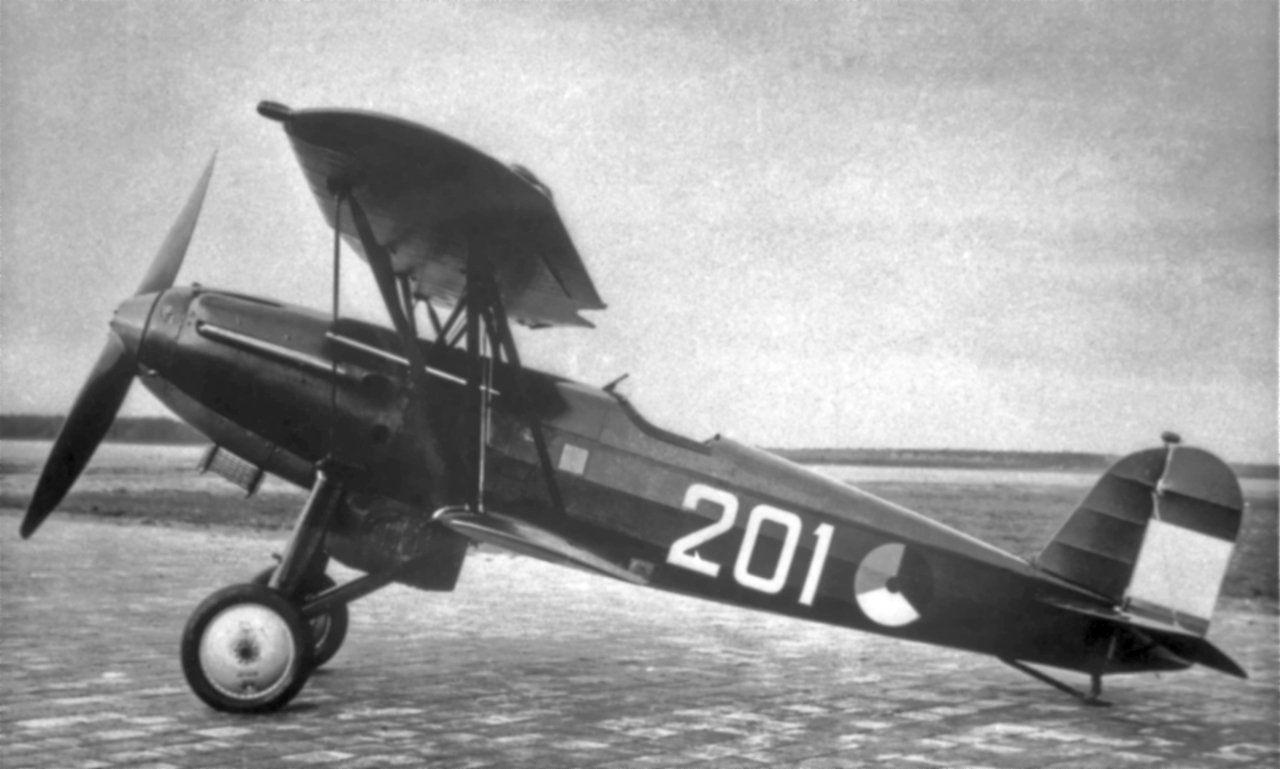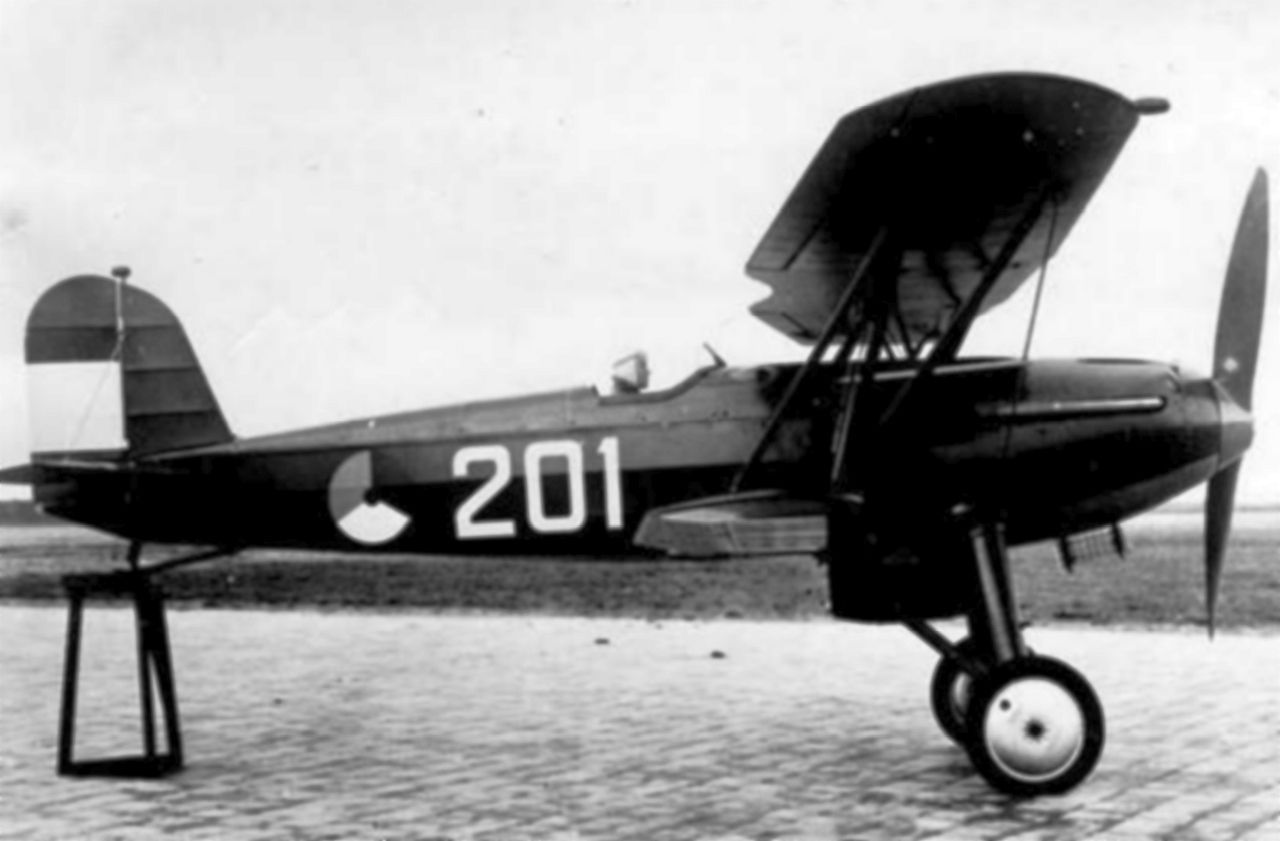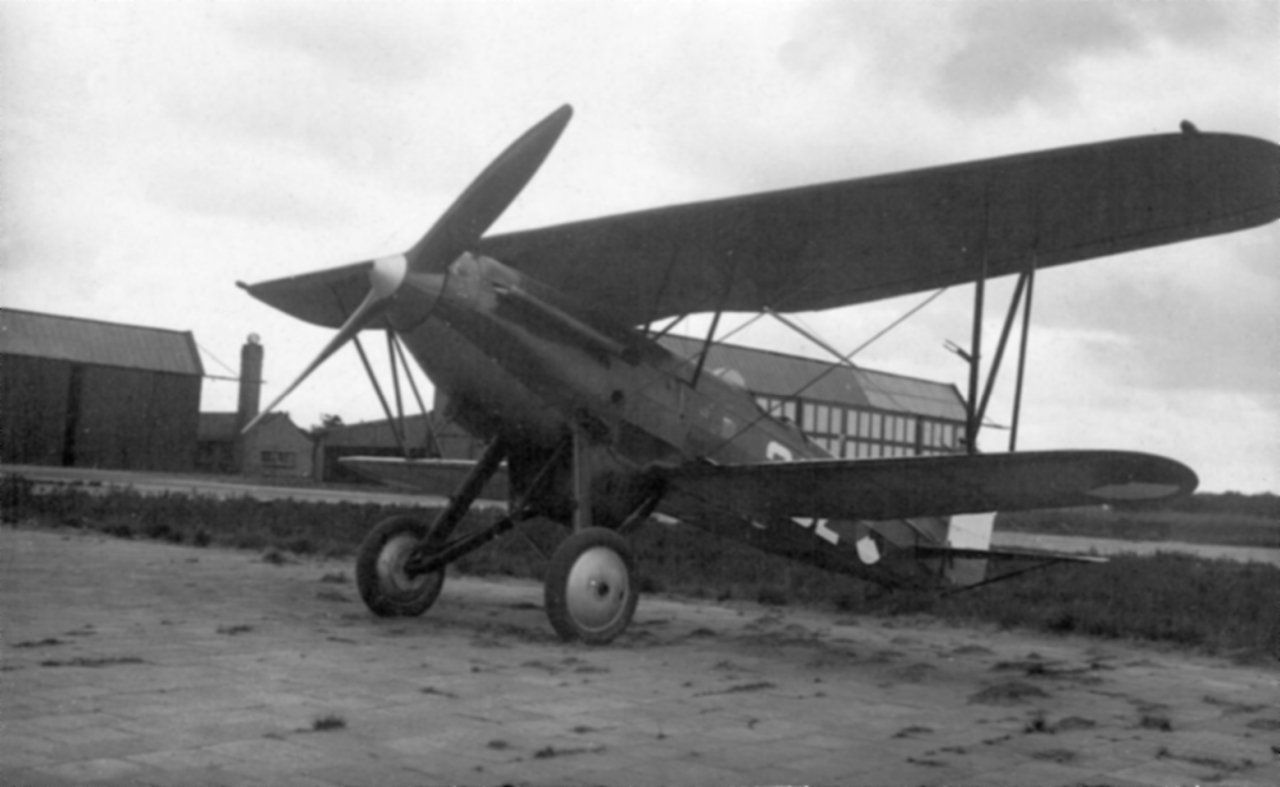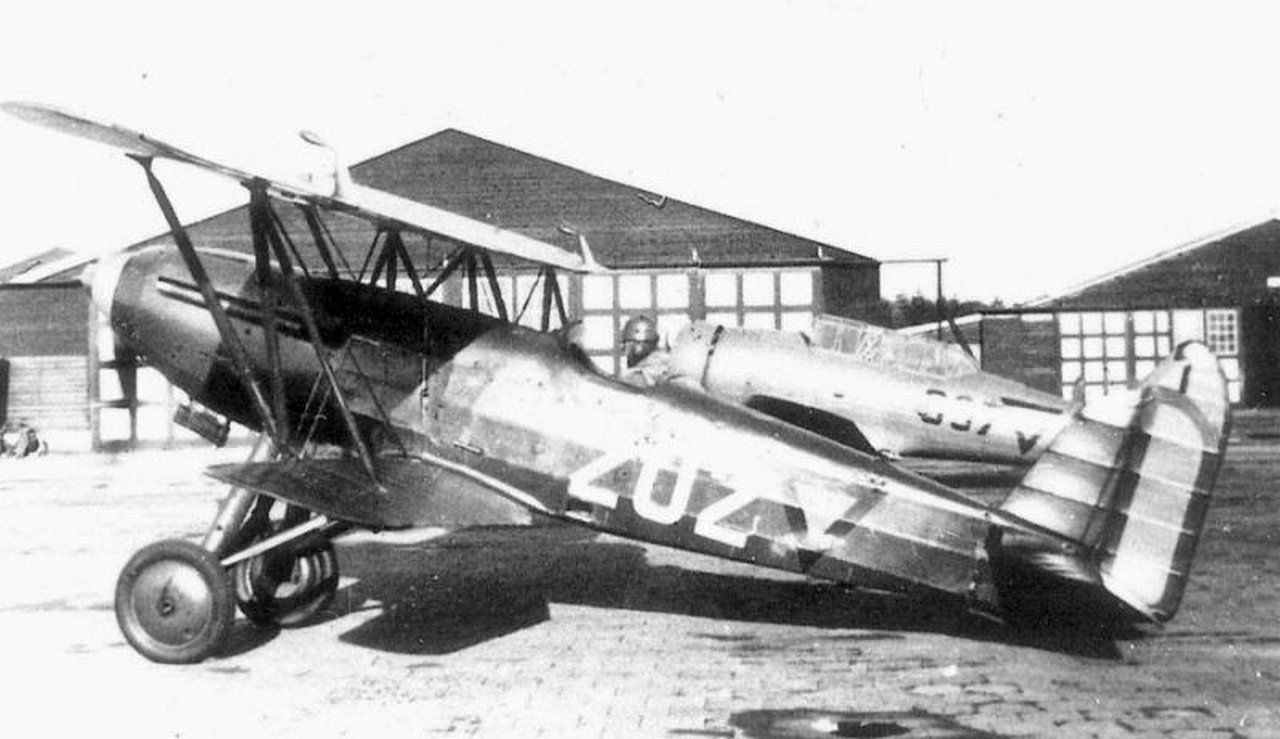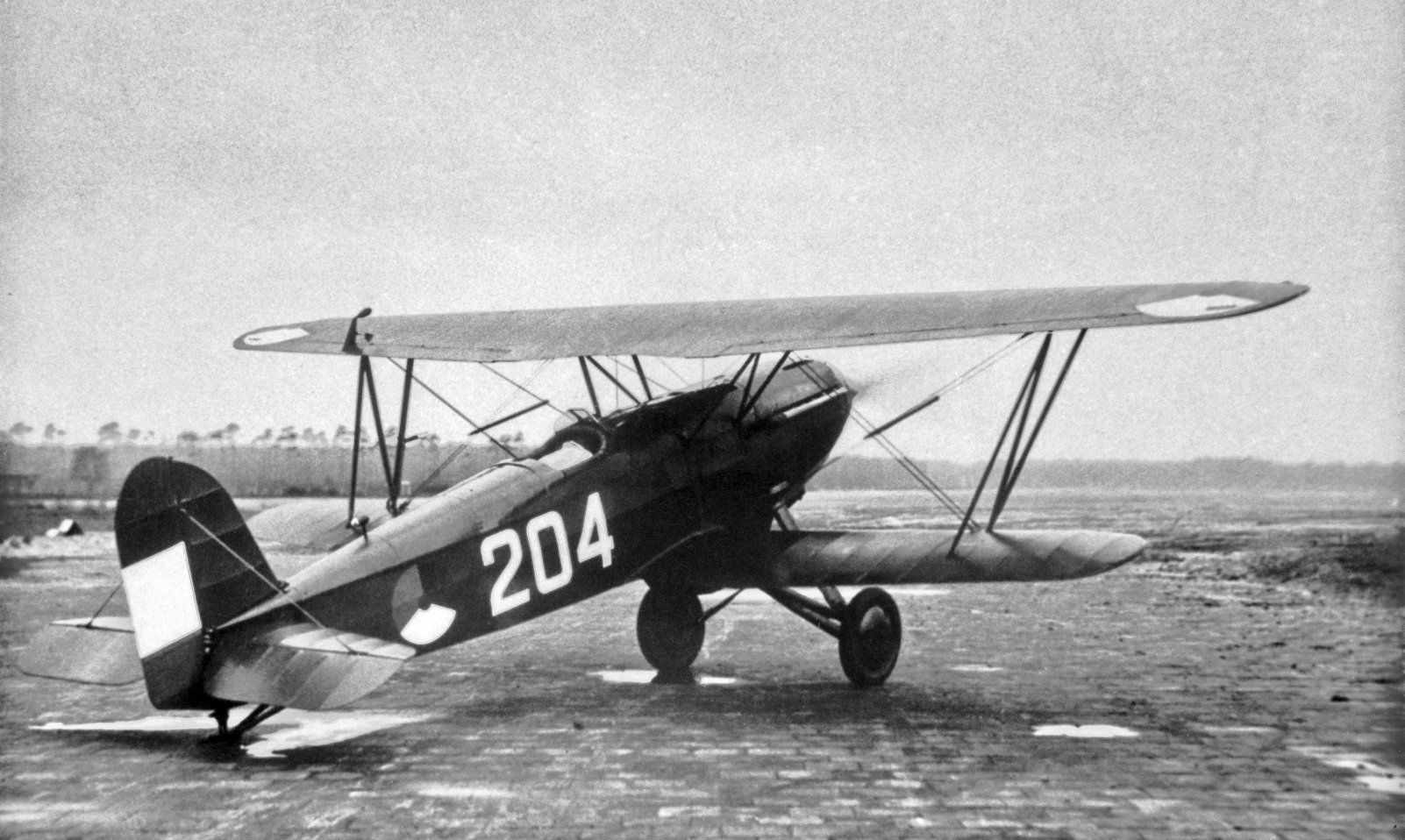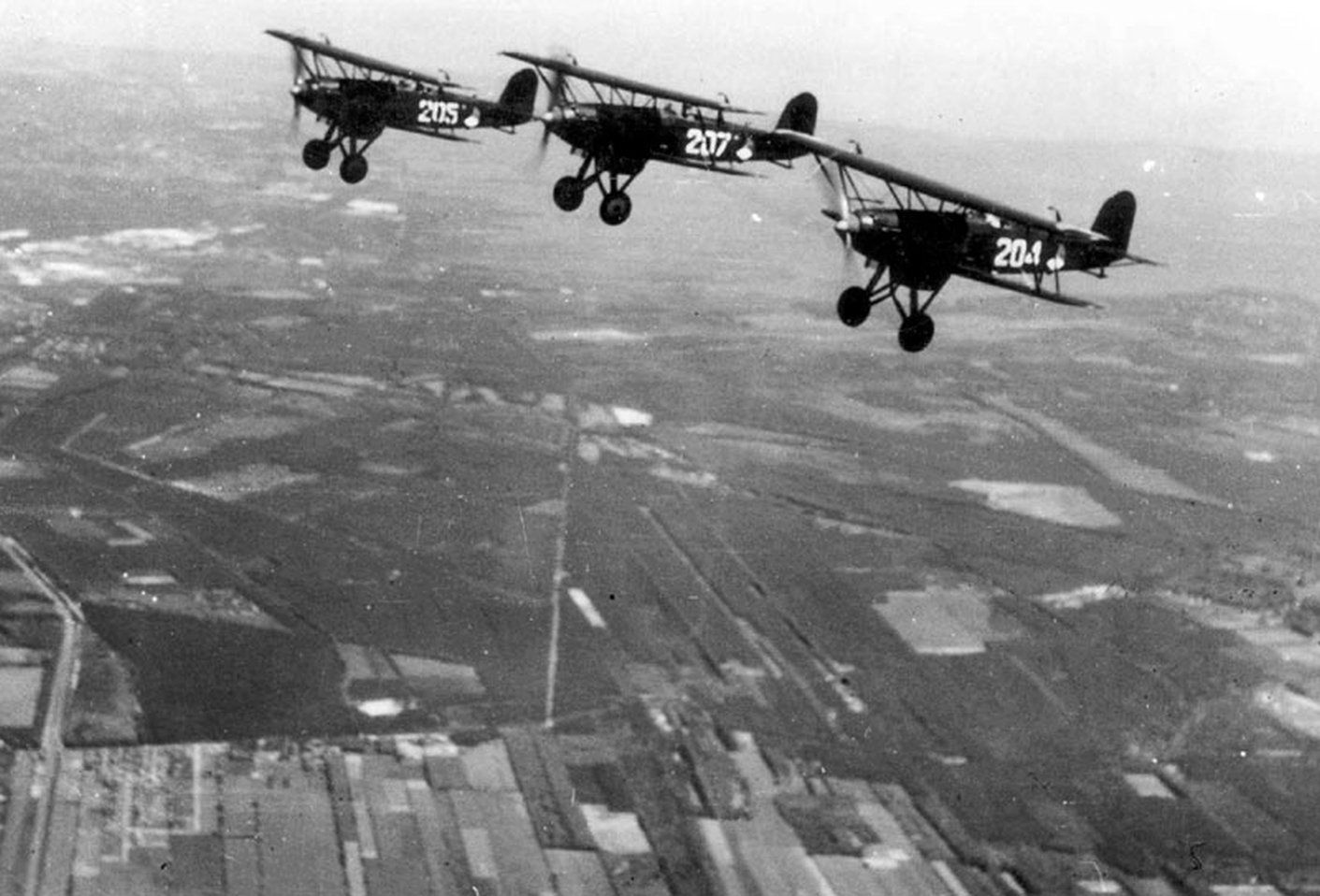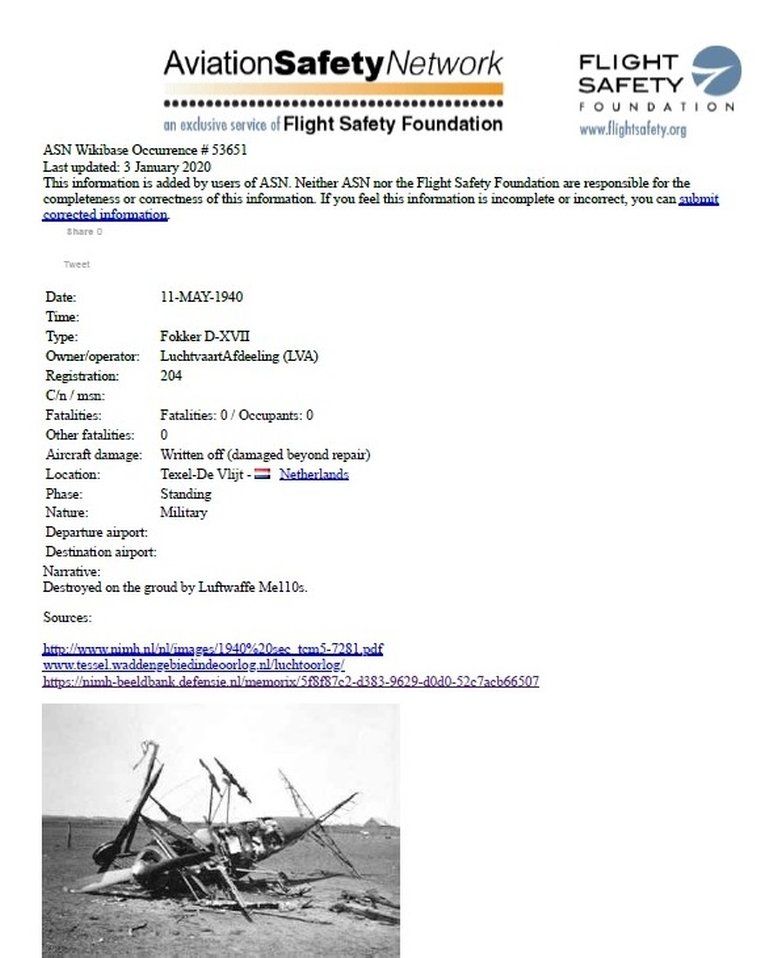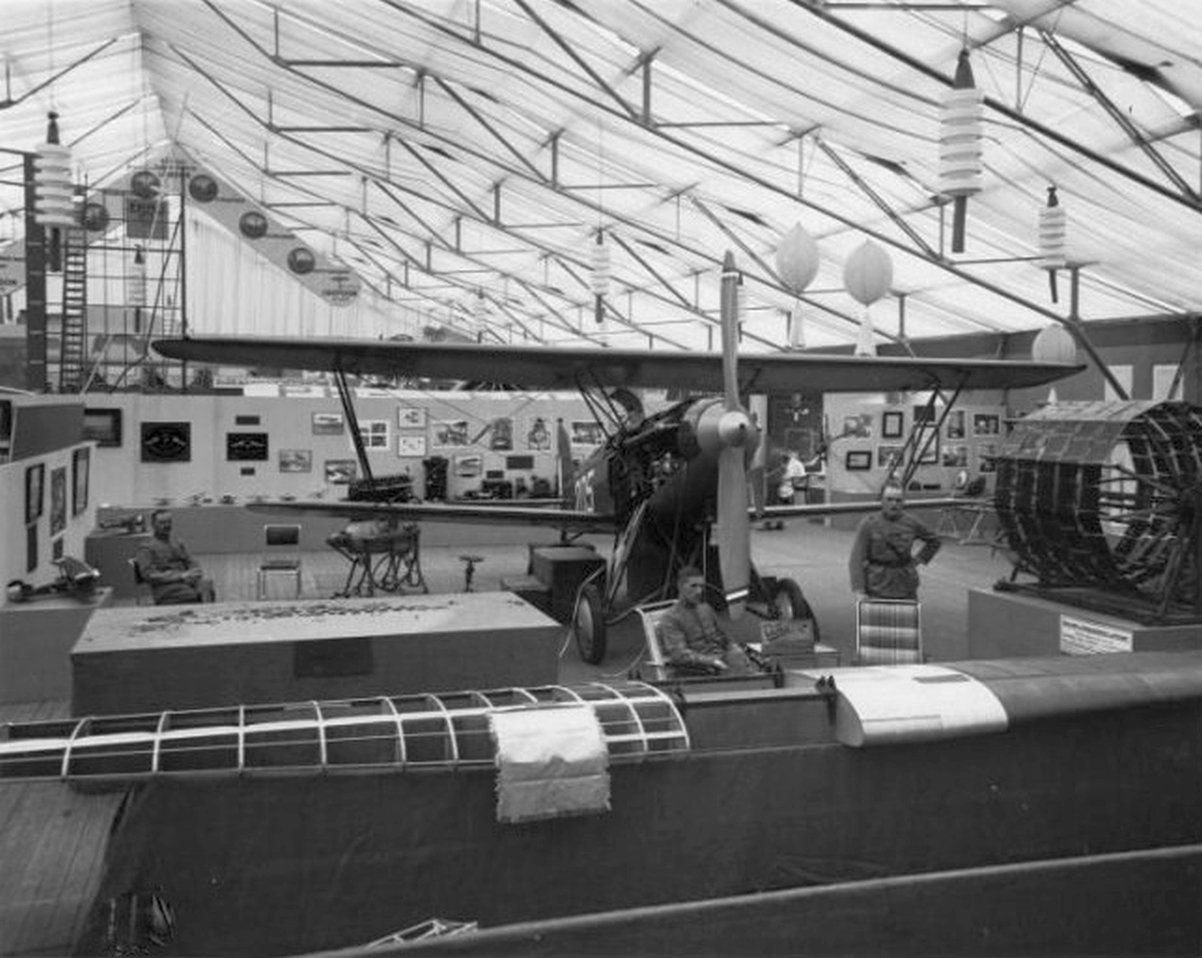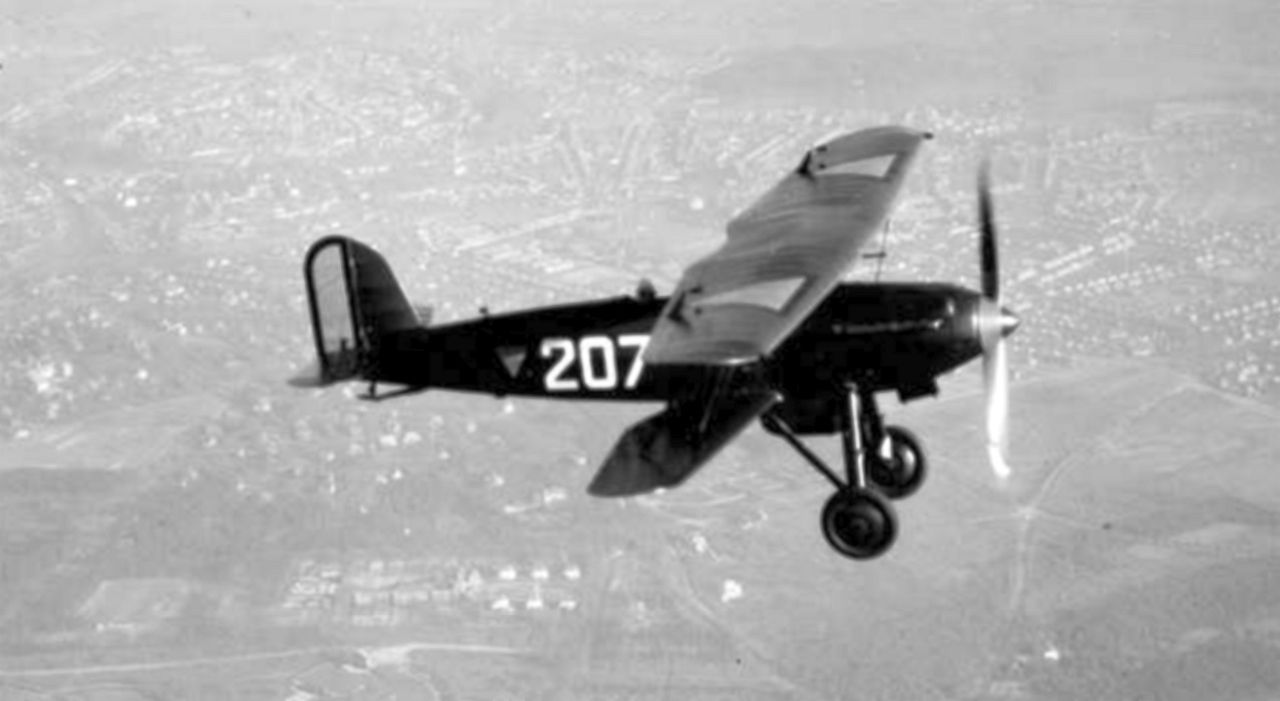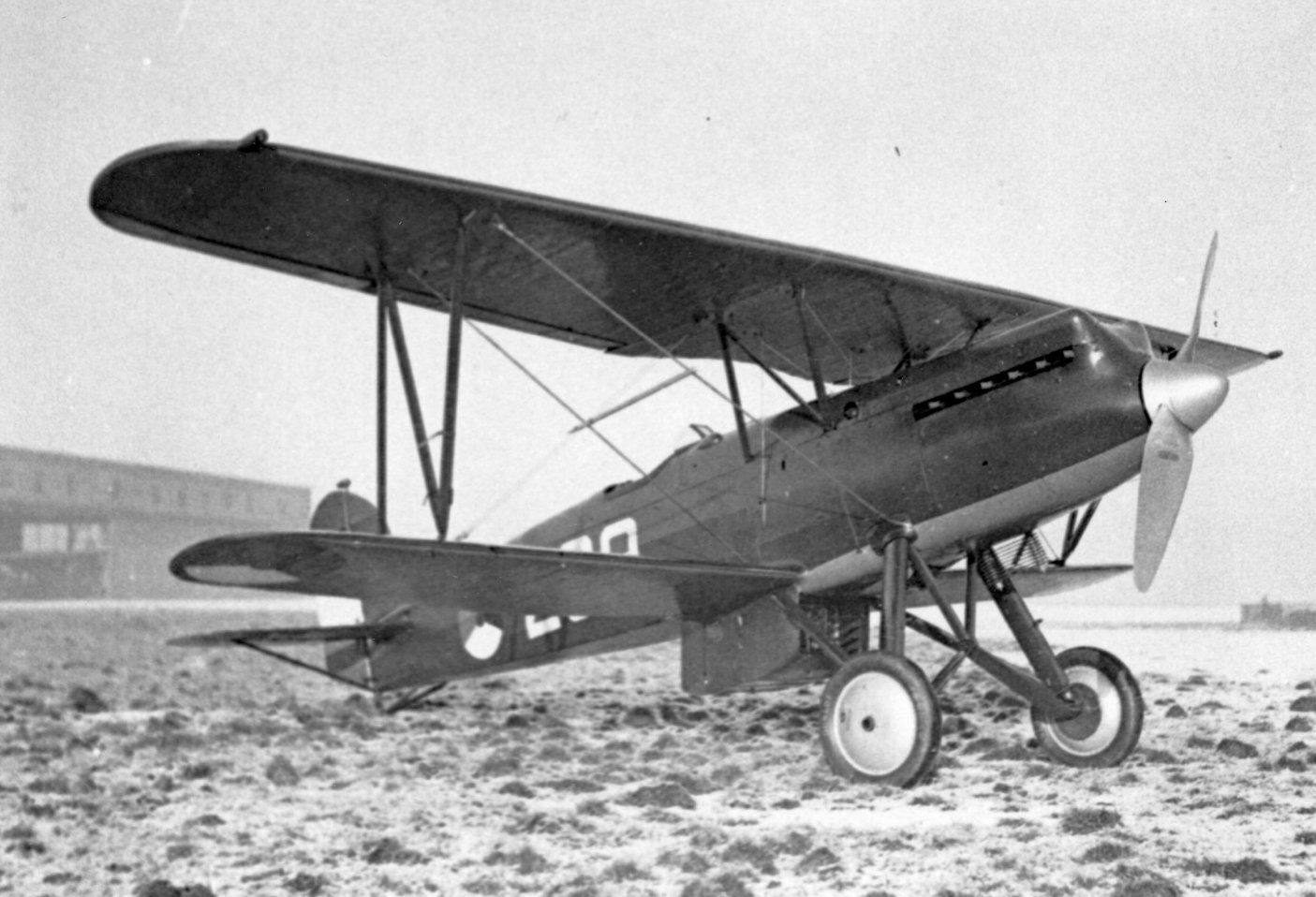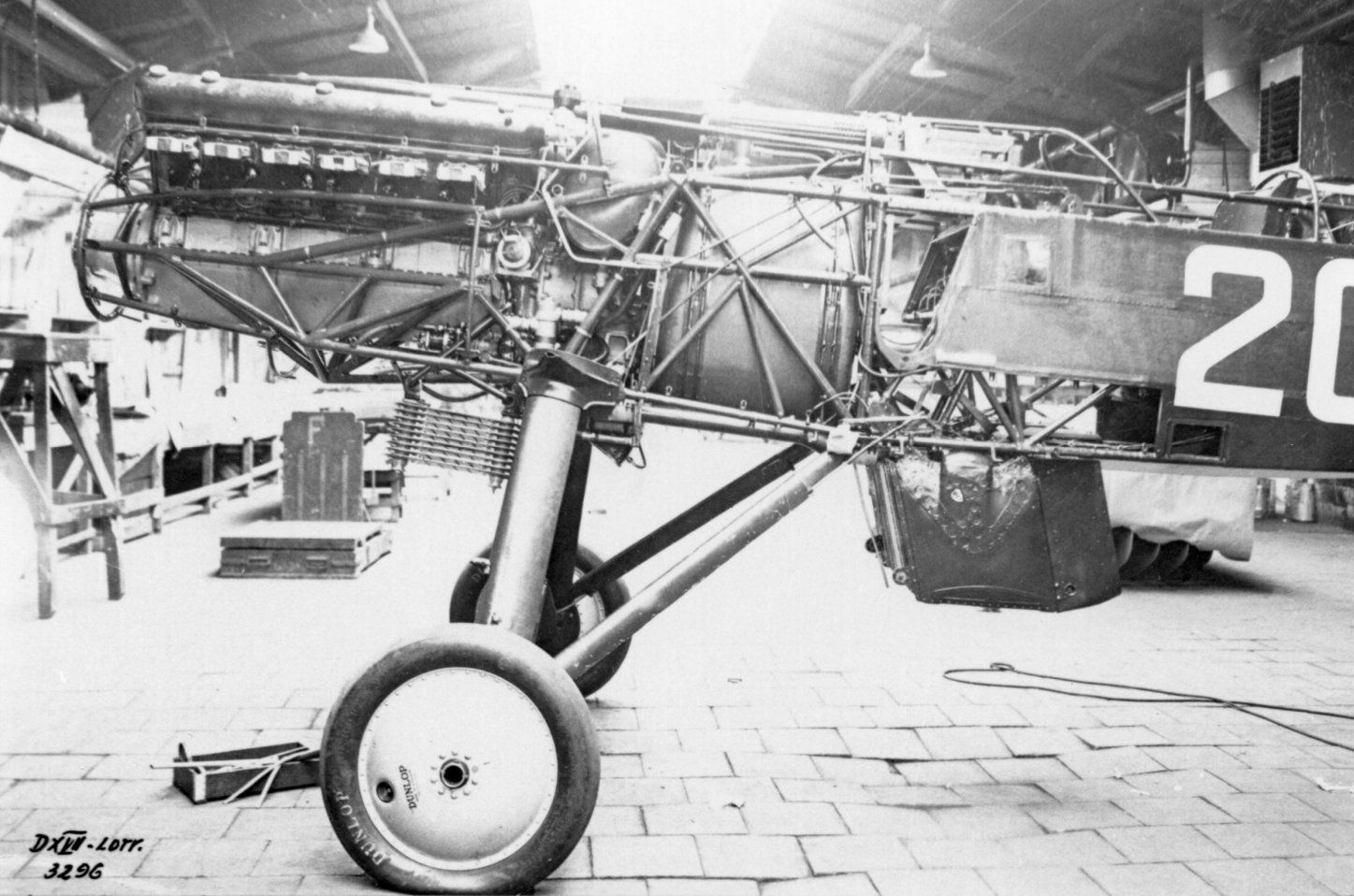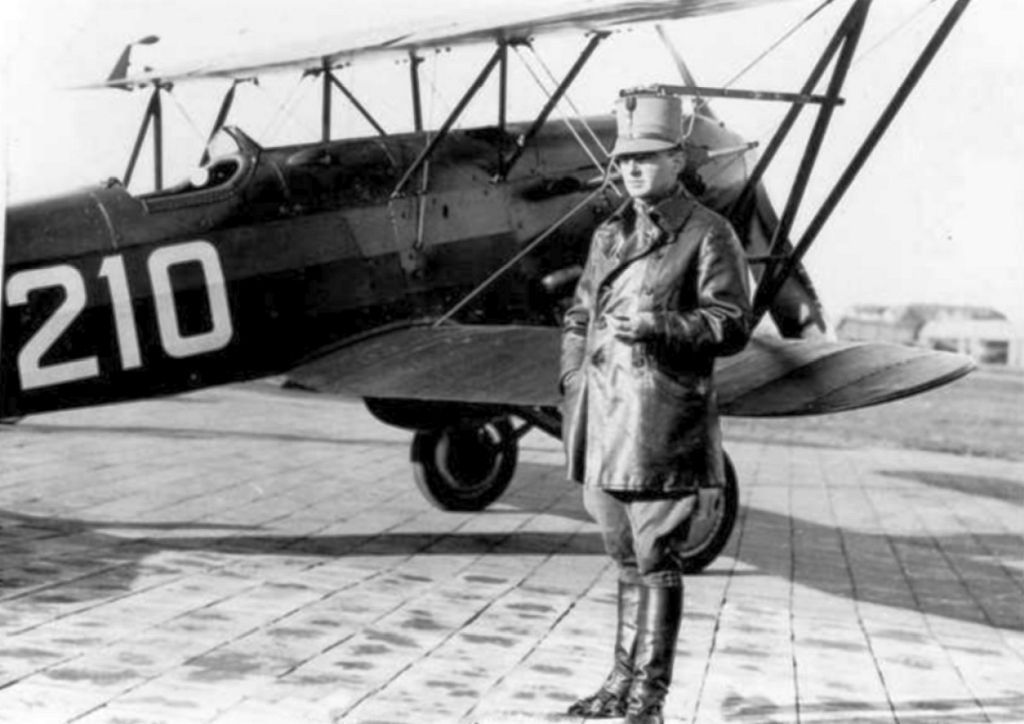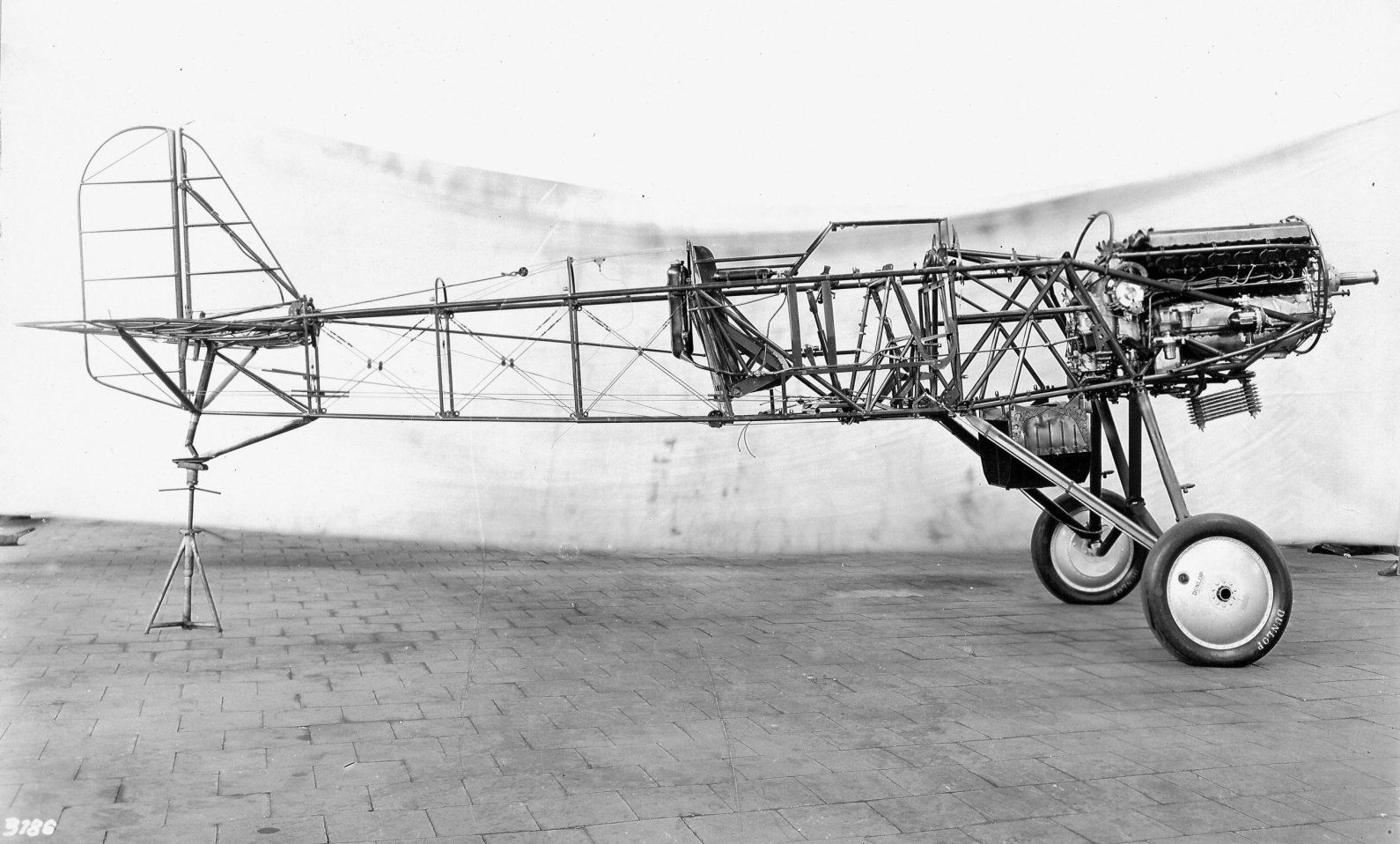The Fokker D.XVII
In 1931 Ir. Marius Beeling, Fokker's new designer/constructor, designed the one-and-a-half-decker D.XVII.
The D.XVII was originally designed for the KNIL in the East Indies, as a replacement for the failed KNIL version of the D.XVI.
The D.XVII would be the last biplane designed by Fokker.
The first flight of the D.XVII took place on 27 November 1931, after which the LVA ordered ten D.XVIIs in 1932, the first of which was delivered in 1934.
Of the ten machines ordered, eight were equipped with a Rolls Royce Kestrel II engine of 580 hp, maximum speed 350 km/h.
One aircraft was fitted with a 600 hp Lorraine Petrel engine, with a maximum speed of 356 km/h and another aircraft was fitted with a 670 hp Hispano-Suiza engine, with a maximum speed of 395 km/h.
In 1938 the Lorraine and the Hispano were also replaced by RR Kestrels.
The prototype of the D.XVII, tested in the summer of 1932 in the Indies, returned and was added to the fleet of ten LVA machines.
The prototype was equipped with the 650 hp Curtiss Conqueror V1570 V-12 engine for the Indies.
The KNIL did not purchase the D.XVII for use in the East Indies.
The LVA machines were equipped with two FN-Browning M.36 7.92 mm machine guns as armament.
In May 1940, the last seven D.XVIIs took part in the fighting, but ultimately all machines were lost.
Click on the photo to enlarge the photo







